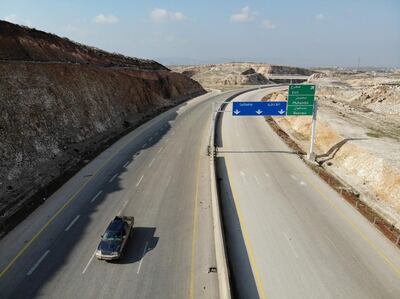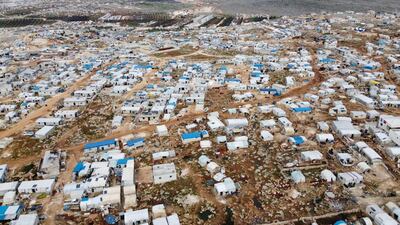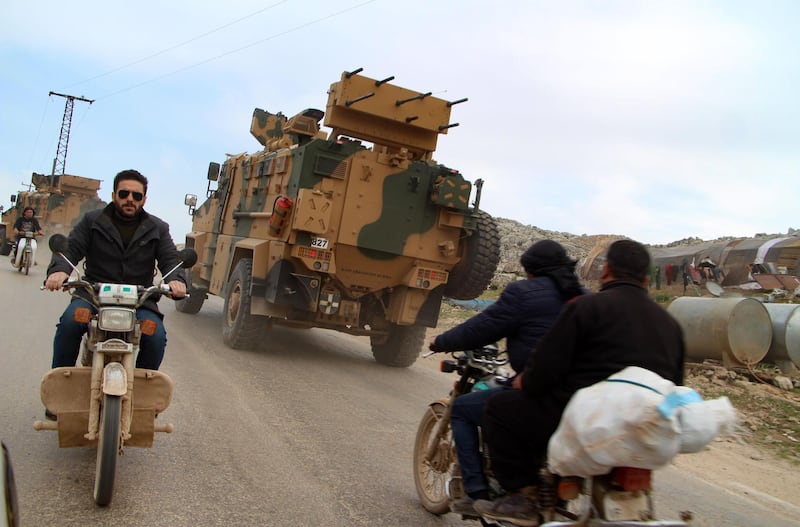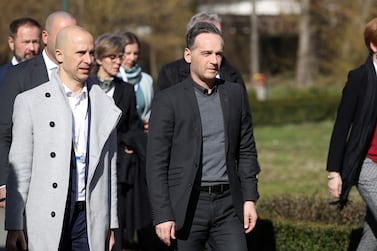A ceasefire agreement between Russia and Turkey brought relative calm to Syria's rebel-held north-west on Friday but questions remain about the durability of the agreement after previous such deals collapsed and the failure of the latest pact to address key issues including the fate of thousands of civilians displaced by fighting.
The deal was announced by Russian President Vladimir Putin and Turkish President Recep Tayyip Erdogan after talks in Moscow on Thursday to end weeks of escalation that have seen Nato member Turkey enter into direct clashes with the Syrian army and its allies in the Idlib region.
Idlib province and adjoining areas witnessed a significant increase in hostilities after December 1, when pro-government forces went on the offensive in Syria’s last rebel stronghold. Ground advances and withering bombardments from the air have displaced nearly a million people as opposition territory has shrunk.
The offensive increasingly drew Turkey into the fight, with Turkish drones and artillery inflicting unprecedented damage on Syrian army units and allied Iranian-backed militias – possibly the reason that Russia and Turkey returned to the negotiating table.
Their agreement stipulated a cessation of hostilities beginning at midnight on March 6 as well as the establishment of a six-kilometre buffer zone either side of the M4 highway that runs between Latakia and Aleppo. Russian and Turkish forces are to begin joint military patrols along sections of the M4 by March 15.
But for many, the latest ceasefire sounds a lot like previous agreements – not least another Russian-Turkish deal brokered in Sochi in September 2018 that was meant to avoid exactly the kind of devastating pro-government offensive seen in recent weeks.

The Sochi agreement came as the Syrian government appeared set to launch a major offensive on Idlib following two years of advances against other rebel-held areas of the country – also with the help of Russian air power and Iranian-backed militias. The government seized one opposition pocket after another, often using siege tactics to impose surrender agreements that saw hundreds of thousands of rebel fighters and civilians opt to be sent to the north-west rather than live under President Bashar Al Assad’s rule.
Some of these areas were so-called “de-escalation zones" established as part of another ceasefire agreement brokered between Iran, Russia and Turkey in Astana in 2017. All of them apart from the north-west were retaken by pro-government forces within a year of the agreement.
This has cemented a view within opposition circles that the Syrian government, and Russia, simply use ceasefire agreements to replenish supplies and rest fighters for the next escalation. Mr Al Assad has repeatedly made clear his intention to retake "every inch" of the country from opposition groups.
Under the Sochi agreement, Russia and Turkey were to oversee the formation of a 15-20 kilometre “buffer zone" along the front lines cutting through areas of northern Hama province, southern Idlib and western Aleppo province. Joint military patrols would follow.
Turkey was tasked with overseeing the withdrawal of rebel heavy weaponry and all fighters of the Islamist militant group Hayat Tahrir Al Sham (HTS) from the buffer zone.
The deal was beset with missed deadlines and persistent violations from all sides. But it lasted for as long as it was advantageous to the foreign backers on either side of Syria's nearly nine-year war.
Analysts remain unconvinced that this latest agreement will be any different.
According to British-Syrian journalist and analyst Danny Makki, who writes for think tanks such as the US-based Middle East Institute, the latest Idlib ceasefire is merely an "extension of previous de-escalation deals.”
“There's nothing really new in [this] ceasefire agreement,” Mr Makki said, suggesting that it appeared to have been "formulated pretty quickly to get out of this cycle of dangerous escalations”.
There are question marks about whether rebel-held territory at the far western end of the M4 highway in Latakia province, where hardline Islamist groups including HTS and the Turkistan Islamic Party hold sway, will be included in the new buffer zone. The agreement makes no mention of another key road in the north-west, the M5, which has been focus of some of the fiercest fighting in recent weeks.
Mr Makki suggested that the truce could hold in Idlib while simultaneously failing to prevent fighting in other areas.
“[Joint patrols] could continue to happen and there’ll still be fighting in different locations. So there's nothing really guaranteed – apart from the fact that there's this desire from both parties to enter into a direct agreement.”

However, perhaps the most telling omission from Thursday's agreement is the fate of the hundreds of thousands of displaced civilians.
The UN estimates that more than 950,000 people have been forced to flee their home since December, many of them to already overflowing camps and tent cities along the Syrian-Turkish border. There have been stories of children freezing to death and families sleeping out in the open for want of adequate shelter.
Ayman Hameed, originally from Homs province south of Hama, ended up in north-western Syria in 2017 following a forcible evacuation agreement imposed on his home town, Al Waer. He was displaced once again by the recent fighting in Idlib.
Mr Hameed is unconvinced this ceasefire will bring any change.
"We've come to believe that ceasefires are the real threat to people [here] … because after every truce, territories collapsed or people were displaced or the massacres began," he told The National.
"It's like the common saying, the 'calm before the storm’,” he said, describing the ceasefire as a “trap”.
And for displaced Syrians like Mr Hameed, the future remains as uncertain as ever.
“Yes, there’s a truce, but [displaced people’s] homes are gone. They don’t gain anything," he said.
“We're living in tents. Our homes are gone, so is our land. What do we actually get from this agreement?”






